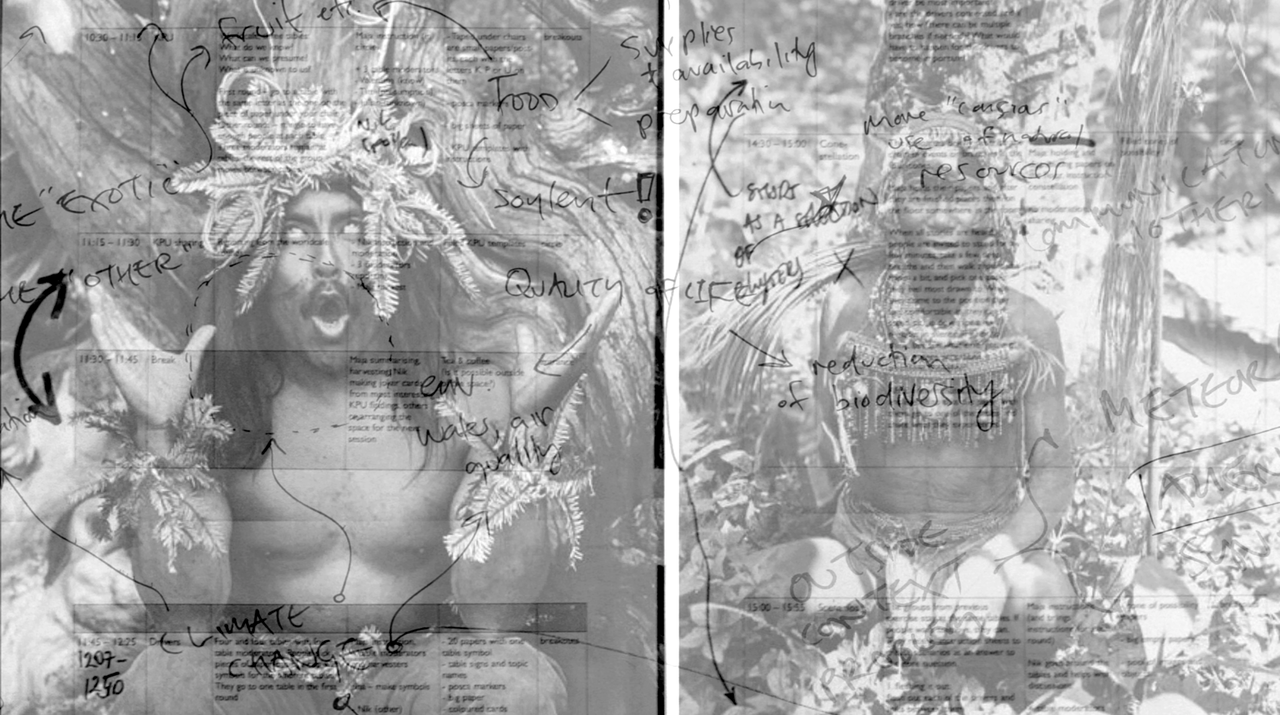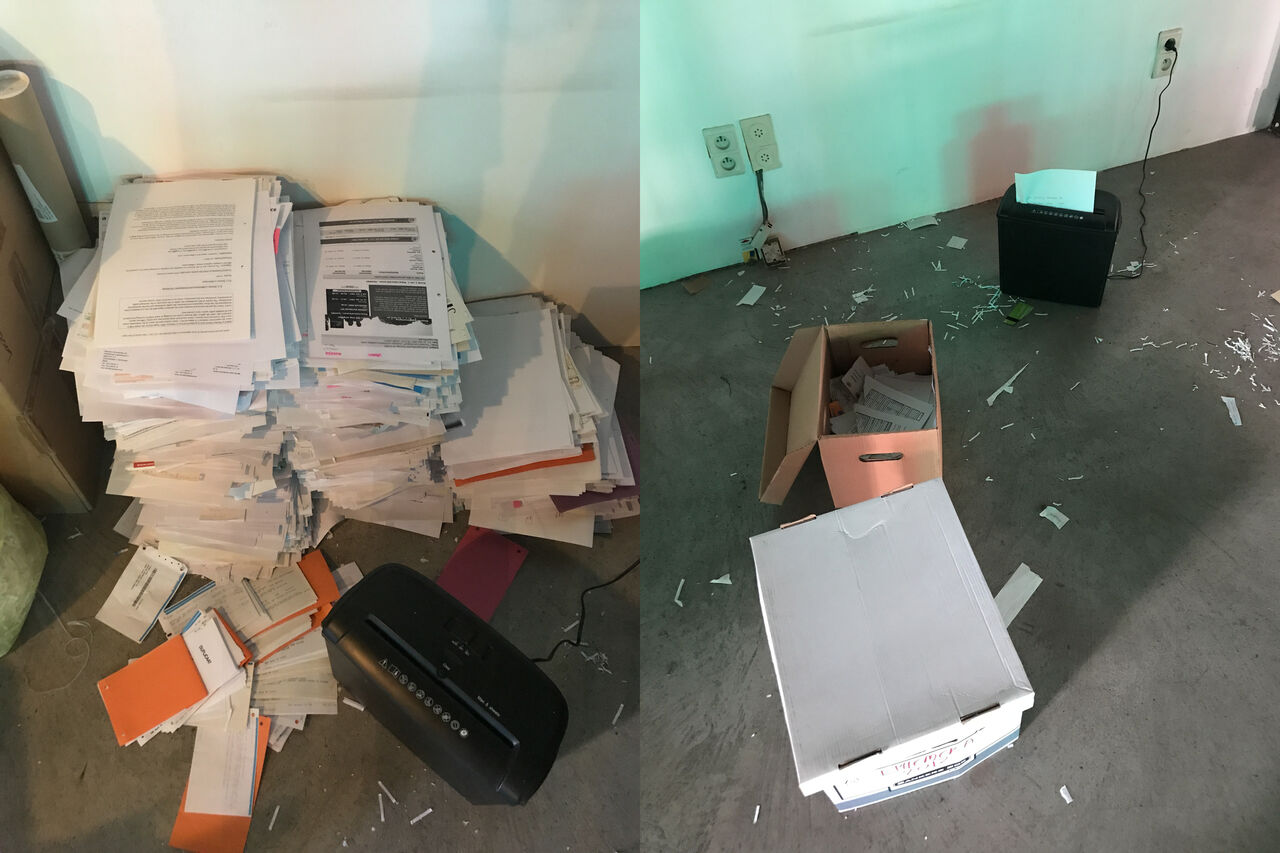Communing with Externalities
Contemplating the external forces that affect a financial ecosystem’s balance.
Excerpts adapted from Dark Arts, Grey Areas and Other Contingencies, first performed at RADMIN 2019, published in the Radmin Reader and the Techniques Journal by the Center for Philosophical Technologies.
With the certainty and stature of court astrologers, economists impose their own language and metaphors, obscuring their sources in the messy materiality of life and outlining economic “benefit” in terms of resources, efficiency, and transactions. How to live and love becomes abstracted, rationalized, and validated as income or expenditure, profit and loss. What can be measured becomes what matters. What if we consider the economy as a particular belief system? Economic beliefs are usually concerned with methods of allocation, exchange, and ownership. The belief in “markets” as a way of determining “value”, for example. These beliefs are encoded in legal statutes, financial conventions, and patterns of behaviour. You probably believe that if someone gives you some pieces of paper named “euros”, you could exchange them with someone else for a cup of coffee. Most of us engage in this most straightforward economic ritual without much thought.

By trusting that we can use “money” to support our livelihoods, we become complicit in maintaining an economic belief system reinforced by governments, central banks, and international markets. Yet beliefs can be slippery and abstractions leaky. Effects that are felt “outside” of a market or transaction become ghostly when seen from within, illusions that are neither profit nor loss. Inhabiting the outside, the external, are externalities. How real, economically, is an oil spill if it doesn’t affect the balance sheet? How do you account for a broken heart? For the relentless productivity of earthworms, bees, or the ionosphere? Externalities haunt economic beliefs with detrimental side effects, unexplained improvements, and unintended consequences. They cast shadows across the shimmering mirage of “business as usual”.

In the shadows, things can take on a life of their own. Technological agents previously concerned with automating the mundane are beginning to make significant decisions on our behalf. Machines are gaining agency as economic actors and becoming increasingly involved in daily life. While we may be relieved to outsource paperwork to an AI or commute in a self-driving car, what are the hidden costs? Which automated systems are acting against our interests? What riddles are we misunderstanding? What sacrifices will need to be made?



In Estonia, for example, there is a growing concern around algorithmic-liability laws. This discussion can easily become too abstract or complicated to follow. So rather than wrapping the issues in techno-legal jargon, the Estonian public administration draws on the language of folk tales. In particular, the kratt Marten Kaevats, “Estonia Considers a ‘Kratt Law’ to Legalise Artificial Intelligence (AI)”. A kratt is a magical creature from stories familiar to many Estonians, usually assembled from household objects by a greedy or lazy protagonist. The protagonist must ask the devil to give the assemblage a soul, and having acquired one, the newly animate kratt will take on any task it’s given.
However (and there is always a “however”), the kratt must be constantly put to work, or it becomes a danger to anyone around it. The stories usually develop around greed and ambition, involving increasingly difficult or seemingly impossible tasks. At some point, the kratt inevitably runs out of productive things to do, and the situation goes spectacularly wrong. Kratts have been known to self-combust, burn down houses, and destroy villages. They almost always ruin their creators’ livelihoods in unexpected ways. The stories warn about hidden costs and ongoing responsibilities. They warn of engaging with entities capable of affecting the world on our behalf.

As more complex technologies and “planetary others” become increasingly entangled in the global economic drift net, new grey areas are certain to emerge. There are current experiments to assist landscapes in becoming cooperatives (such as terra0 terra0 is an evolving prototype built on the Ethereum network that aims to provide automated ecosystem resilience frameworks. Via instantiating a Decentralised Autonomous Organisation atop areas of land to manage them, terra0 aims to create technologically-augmented ecosystems that are more resilient, and able to act within a predetermined set of rules in the economic sphere as agents in their own right. or Zoöp Zoöp & the Practice of Zoönomy) or to enable rivers to act as legal entities (like Whanganui in Aotearoa). In these grey areas, we could be looking at the birth of an “animist exonomics”, a way of centring things previously treated as externalities. The prefix “exo” has been used in scientific terms to denote that which is “outer or outside”, like exobiology or exoskeleton, for example. As a speculative term, exonomics suggests a way of managing resources by prioritising all that traditional economics considers external.
So rather than economics studying how to manage a home (Greek term oikonomia means “household management”), exonomy acknowledges that a home and its resources evolve through relationships with forces that are external to it; like clean air, the wellbeing of a microbiome or the beauty of the atmosphere. An economics rendered unrecognisable as it incorporates aspects of animism, shamanism, or syncretic practices alongside free markets, rational actors, and steady states. Lines of communication with “other-than-human” sentience. A communion with the multiplicity of worlds and worldviews constantly flickering around us.


Further Adventures in Practical Ontology
🝓
Further reading & references.